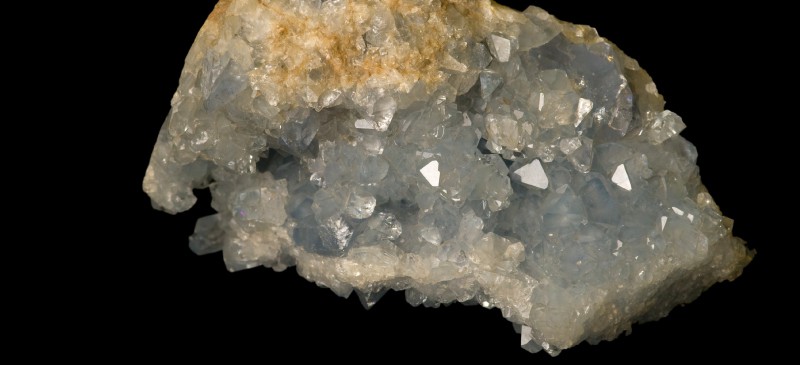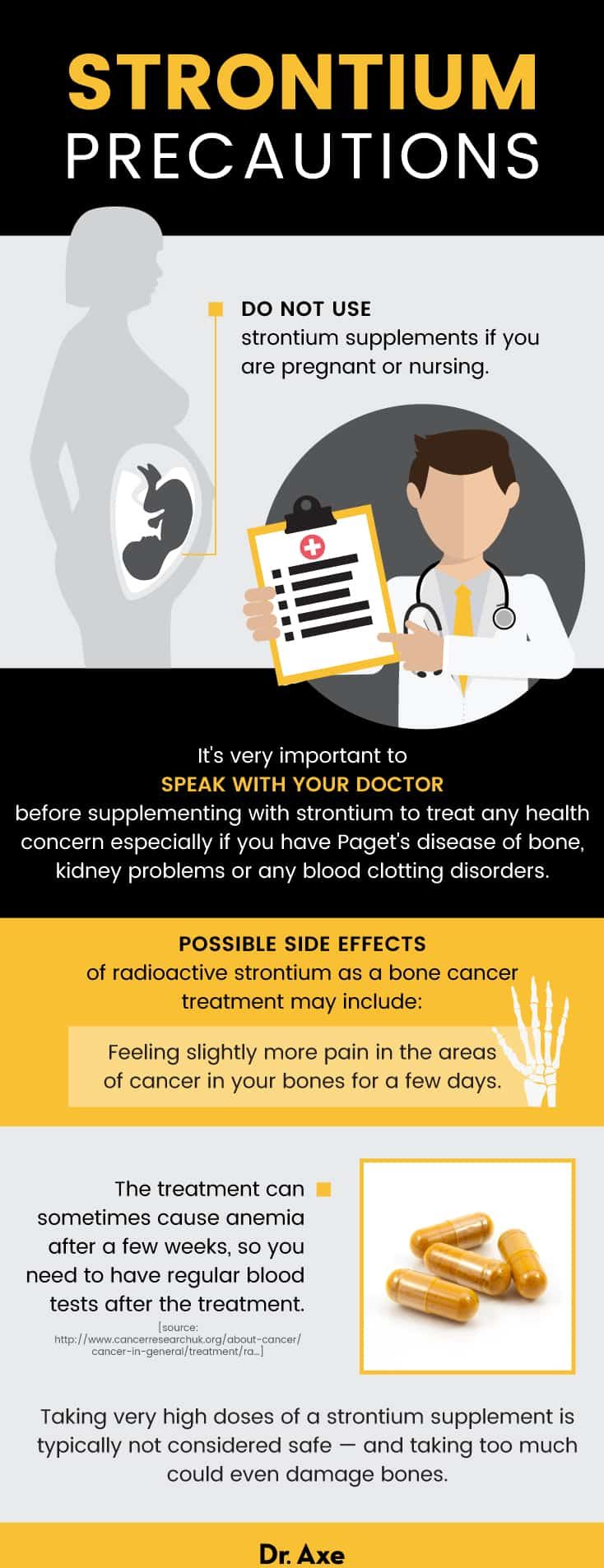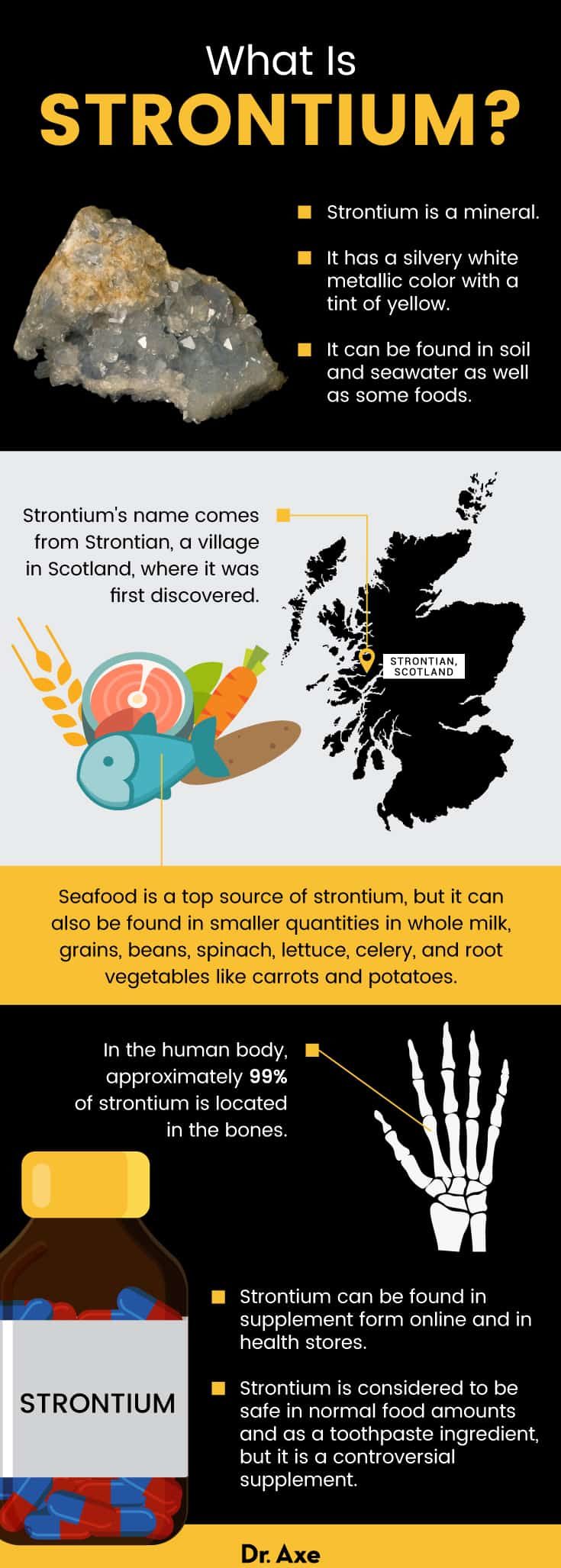This Dr. Axe content is medically reviewed or fact checked to ensure factually accurate information.
With strict editorial sourcing guidelines, we only link to academic research institutions, reputable media sites and, when research is available, medically peer-reviewed studies. Note that the numbers in parentheses (1, 2, etc.) are clickable links to these studies.
The information in our articles is NOT intended to replace a one-on-one relationship with a qualified health care professional and is not intended as medical advice.
This article is based on scientific evidence, written by experts and fact checked by our trained editorial staff. Note that the numbers in parentheses (1, 2, etc.) are clickable links to medically peer-reviewed studies.
Our team includes licensed nutritionists and dietitians, certified health education specialists, as well as certified strength and conditioning specialists, personal trainers and corrective exercise specialists. Our team aims to be not only thorough with its research, but also objective and unbiased.
The information in our articles is NOT intended to replace a one-on-one relationship with a qualified health care professional and is not intended as medical advice.
Approach Strontium Supplements with Caution
September 5, 2018

Have you ever heard of strontium? It can be found in soil and seawater, and it’s actually used as a supplemental treatment for osteoporosis and other bone diseases. Although many people have never heard of it before, it’s a very interesting and somewhat controversial supplement. It’s been compared to calcium in its bone-boosting abilities. (1) A radioactive form is even used as a form of cancer treatment for bone cancers and prostate cancer. (2)
So what is it? What else is it good for? Is it even safe? Let’s talk about these answers and more.
What Is Strontium?
Stable strontium’s atomic symbol is Sr, its atomic number is 38 and its atomic weight is 87.62. It boils at 2,520 degrees F (1,382 degrees C) and melts at 1,431 degrees F (777 degrees C). Sr can be found in Group 2 of the periodic table. The naturally occurring form is made up of four stable isotopes: Sr-88 (82.6 percent), Sr-86 (9.9 percent), Sr-87 (7.0 percent), and Sr-84 (0.56 percent). (3)
If you’re not into chemistry, then those scientific facts probably don’t mean that much to you. So what is stable strontium exactly? It is an alkaline earth metal most similar to barium and calcium. It’s also referred to as being a “soft metal” like lead. (4a) In addition, strontianite is a mineral that comes from concentrations of strontium compounds, and there are several strontium compounds. According to Wikipedia, “Strontianite (SrCO3) is an important raw material for the extraction of strontium. It is a rare carbonate mineral and one of only a few strontium minerals. It is a member of the aragonite group.” (4b) Another mineral containing strontium is celestite, which is used in strontium metal alloys.
What does this alkaline earth metal look like in nature? Natural strontium has a silvery white metallic color with a tint of yellow. It can be found in soil and seawater as well as some foods. Seafood is a top source of Sr, but it can also be found in smaller quantities in whole milk, grains, beans, spinach, lettuce, celery, and root vegetables like carrots and potatoes. In the human body, approximately 99 percent of Sr is located in the bones. (5a)
5 Possible (and Controversial) Health Benefits
How can Sr be used? Let’s take a look at the possible health benefits of strontium. Keep in mind that more research is still needed to confirm its benefits and safety for some of these uses.
1. Osteoporosis and Bone Fractures
When people are looking into options for osteoporosis medications, some people want to take the natural route and choose to make strontium a part of their treatment plan. It’s been interesting what research has shown to date about its use for osteoporosis. Even though it’s not considered a nutrient, it’s known that the human body can absorb strontium and utilize it as it would calcium. (6)
Strontium ranelate is a form that is sold as a prescription medication for osteoporosis and bone fractures in Europe and Australia. A double-blind, randomized placebo-controlled trial published in The Journal of Clinical Endocrinology and Metabolism looked at the effects of Sr on 261 men with primary osteoporosis. For two years, 174 of the men received 2 grams of strontium ranelate per day while 87 men received a placebo. To measure the effectiveness of it, researchers measured bone mineral density in the neck, spine and hip as well as some biochemical bone markers. Previous research demonstrates that strontium ranelate can promote bone formation while decreasing vertebral and nonvertebral fracture risk in women with postmenopausal osteoporosis. Overall, the results of this 2013 study performed with male subjects demonstrated that strontium ranelate supplementation appears to improve bone mineral density in men similar to the way it has been shown to help postmenopausal women struggling with osteoporosis. (7, 8)
There have been more studies that show the positive effects of strontium ranelate on osteoporosis and bone fractures. However, there has also been concern over strontium ranelate’s effects on heart health. In 2013, the committee of the European Medicines Agency (similar to the FDA in the United States) recommended suspending strontium ranelate (brand name Protelos/Osseor) for treating osteoporosis. One scientific review published in 2014 by a doctor with admitted ties to pharmaceutical makers concludes, “The increased risk for cardiac events with strontium ranelate has been detected in randomized clinical trials but not in real-life observational studies.” (9)
Ultimately, the European Union now only endorses the use of strontium ranelate in severe cases of osteoporosis with high fracture risk. It does not recommend it as a treatment for anyone who has or has had heart or circulatory problems such as stroke, heart attack, or obstruction of the blood flow in the arteries. In addition, strontium ranelate is stopped if a patient develops heart or circulatory problems during the course of treatment. (10)
2. Bone Cancer
Radioactive strontium-89 is given intravenously for advanced bone cancer or cancer that has spread to the bones such as metastatic prostrate cancer. The drug name for this radioactive form is Metastron. According to Cancer Research UK, “If there are cancer cells in more than one area of bone, radioactive strontium can work well to treat those areas and reduce pain.” (11)
An extensive scientific review published in 2000 concludes that:
It is clear from published reports and from daily practice that injection with Sr-89 is a simple, well-tolerated treatment providing a considerable chance of good palliation of pain in patients with bone metastases from prostate cancer. Although Sr-89 is mostly used when there are several painful metastatic sites, its application in earlier stages of the disease is beneficial, and it may decrease progression and the need for external radiotherapy. With a few simple measures, the application of Sr-89 causes no problems. Toxicity is minimal and consists of a transient 30 percent reduction of the [platelet] count. The application of Sr-89 is cost-effective, especially when compared with [opioid painkillers]. (12)
3. Prostate Cancer
People with prostate cancer sometimes have the cancer metastasize and spread to their bones. Bone metastases can be extremely painful. Sr-89 has been used as a form of treatment to manage pain resulting from bone pain due to cancer. A 2016 systematic review published in European Urology took a look at several radiopharmaceuticals including Sr-89 for reducing the malignant bone pain from prostate cancer. Overall, the review concludes:
For patients with castration-resistant prostate cancer suffering from malignant bone pain, treatment with a bone-seeking radiopharmaceutical is a relevant therapeutic option often resulting in significant pain reduction. Further studies are warranted to determine which radiopharmaceutical is preferred for pain relief and/or improvement of survival. (13)
4. Sensitive Teeth
You may not realize it, but it’s possible that you have used, or are currently using, a toothpaste the contains strontium. You may be surprised, but strontium chloride hexahydrate is added to toothpaste to reduce the pain associated with sensitive teeth.
I won’t name names, but some of the most well-known toothpastes for sensitive teeth include strontium in their formulas. It’s not an idea that is super-new either. A double-blind, parallel, comparative study study published back in 1987 in the Journal of Periodontology looked at the effects of a toothpaste containing 10 percent strontium chloride hexahydrate on 61 subjects with hypersensitivity. Various tests for tooth sensitivity by the researchers revealed that compared to the placebo, the toothpaste containing Sr decreased dentinal hypersensitivity to “a significantly greater degree.” Positive results were seen within two weeks and continued for the 12 week length of the study. (14)
Unfortunately, a lot of toothpastes that contain Sr may contain a lot of other questionable ingredients, so I recommend sticking with a natural toothpaste or making your own at home such as my Homemade Probiotic Toothpaste.
5. Tooth Decay
In addition to possibly helping to reduce painful tooth sensitivity, strontium may be helpful when it comes to tooth decay and cavities. A 2007 study only involved six participants, but the researchers found that “regular toothbrushing with a strontium-supplemented toothpaste has been found to increase the strontium content in the exposed enamel, which can be an advantage in the prevention of cariogenesis.” (15) What is cariogenesis? It’s a fancy word for the development of cavities!
It also appears that people with strontium in their local water supply seem to have decreased cavity risk. According to the Michigan Health website:
Compared with children with fewer cavities, enamel samples from children with high numbers of caries have been found to contain significantly less strontium. However, supplementation with strontium has not yet been studied as tooth decay prevention. (16)
History
Strontium’s name comes from Strontian, a village in Scotland. It is said to have first been found in the ores of lead mines in Strontian in 1787. Some years later in 1808, it was was isolated in its metallic form using electrolysis by Sir Humphry Davy at the Royal Institution in London. (17)
In the 19th century, the first large scale use of strontium took place when it was employed to extract the sugar from sugar beets. The next big and interesting use of this alkaline earth metal was when it was used in the television production industry, specifically in the cathode ray tubes of color televisions. (18)
Sr is said to be the 15th most abundant element on Earth and it’s common to find it in nature. Both soil and seawater contain this mineral. The Earth’s crust also has Sr at an estimated average of 360 parts per million. (19)
If you’re a fan of red fireworks, you can thank strontium (specifically gaseous strontium monochloride) for that brilliant color you see every 4th of July. It’s also used to create that alerting red color in emergency flares. (20)
Supplements
Strontium can be found in supplement form online and in health stores. Many formulas for bone health will include a form of Sr. The most common supplement form is strontium citrate. Strontium ranelate is available as a prescription medication in Europe and Australia, but it has not been approved by the FDA in the United Sates.
As I said earlier, strontium is naturally found in some foods like grains and root vegetables and that amount is typically higher when there is a higher level of strontium in the growing soil. The typical diet includes 0.5 to 1.5 milligrams of strontium each day. The radioactive form of Sr is not available as a dietary supplement, but it is considered to likely be safe when administered by a health care professional by IV. (21)
A common therapeutic dose you will often seen recommended for boosting bone health is 680 milligrams per day. However, I don’t advocate using these supplements without first reviewing the precautions listed below and talking with your health care provider. Further research is still needed and it can be dangerous to use these supplements if you have certain health conditions.
Risks and Side Effects
Strontium is considered to be safe in normal food amounts and as a toothpaste ingredient. However, Sr-89 (a radioactive form) is considered to be unsafe for pregnant and breast-feeding women. In general, there is not enough research to determine if any form of Sr is safe for pregnant and nursing moms so it’s best not to use these supplements under these circumstances.

Due to mixed research findings, it’s very important to speak with your doctor before supplementing with strontium to treat any health concern especially if you have Paget’s disease of bone, kidney problems or any blood clotting disorders. Sr should be used with caution for those with kidney disease and if you have advanced kidney disease, then strontium ranelate is not recommended at all. Strontium ranelate has also been linked with a small increase in blood clot risk so it should not be taken by anyone with a blood clotting disorder.
Possible side effects of radioactive Sr (Metastron) as a bone cancer treatment may include: (22)
- Feeling slightly more pain in the areas of cancer in your bones for a few days.
- The treatment can sometimes cause anemia after a few weeks, so you need to have regular blood tests after the treatment.
For more information: Sr-89 chloride side effects.
Strontium ranelate may cause unwanted side effects such as stomach pain, diarrhea and headache. In 2014, the European Commission decided that strontium ranelate is only appropriate to be used in severe cases of osteoporosis and should not be used in patients with known circulatory problems. (23)
In general, taking very high doses of a Sr supplement is typically not considered safe — and taking too much could even damage bones, so be careful when taking strontium, as recommended by the ATSDR (Agency for Toxic Substances and Disease Registry). (24, 25)
Conclusion
- Strontium is a mineral and alkaline earth metal like calcium, and it seems to work similarly to calcium in the body with its main benefit being a boost to bone health. Strontium absorption also has effects on the absorption of calcium, magnesium and phosphate ions. (26, 27)
- Scientific studies have shown that Sr may have positive effects on bone diseases like osteoporosis, bone cancer, prostate cancer, tooth sensitivity and tooth decay.
- If you’re suffering from bone or prostate cancer, radioactive strontium therapy should only be given by or under the direct supervision of a doctor with specialized training in nuclear medicine or radiation oncology.
- The possible risks of strontium warrant more long-term independent studies.
- Sr supplements are controversial and should be considered very carefully.
- Obtaining strontium from your diet by eating seafood, whole grains, beans, spinach, lettuce, celery, and root vegetables like carrots and potatoes is the safest way to boost your strontium levels.




